You can find complete information about thermal analysis in ABAQUS. If you do not provide enough information about the different thermal studies, this package helps you understand this concept’s theory. This training package includes various workshops to teach in-depth.
One of the most rampant phenomena in the universe is heat transfer. Heat transfer can cause changes in mechanical characteristics. Heat transfer analysis can be divided into two types: consistent or transient. In this lesson, the settings and tips of these two analyses with examples are discussed.
Then, mechanical analyses under the effect of heat transfer analysis will be investigated. In some cases, these analyses (mechanical/ thermal) should become coupled simultaneously and, in some cases, can be performed consecutively. For each one, essential tips and items to detect problem type and usage method with related examples are presented.
Workshops 1 to 3 are presented in the first lesson; examples are simple and help you understand the lesson better. You can find the details of these 3 workshops on the syllables section. in the below description remained workshops are explained completely.
Workshop 4: Coupled Forge Analysis in Abaqus
In the coupled process, hot forging analysis is presented as a workshop. In some simulations, elements suffer from excessive distortion; In this case, you have to use the ALE technique. This technique is described entirely, and the difference with the two methods, Lagrangian and Eulerian, is presented. This technique is used in the hot forging process; complete notes and steps to solve coupled include types of heat transfer, radiation, convection, conductivity, heat production caused by friction, heat production caused by plastic work, and dependency of elasticity and plasticity on heat is described.
Workshop 5: Impact Analysis Considering Adiabatic Heat Transfer Analysis
In this workshop, impact analysis is done. In this process, heat has a little time to distribute in the whole matter and, another type of heat transfer named adiabatic will be studied. This type of heat transfer and its applications are discussed thoroughly. The material in this process has used Johnson cook’s law, which mechanical characteristics depend on temperature and strain rate.
A full explanation of this model, along with the steps to implement on software, is described. Other matters in this example are investigating impact time, velocity changes according to the time chart of the bullet, the force, and the resultant torque graph of several elements and nodes.
Read More about heat transfer in Abaqus: Abaqus Thermal Analysis
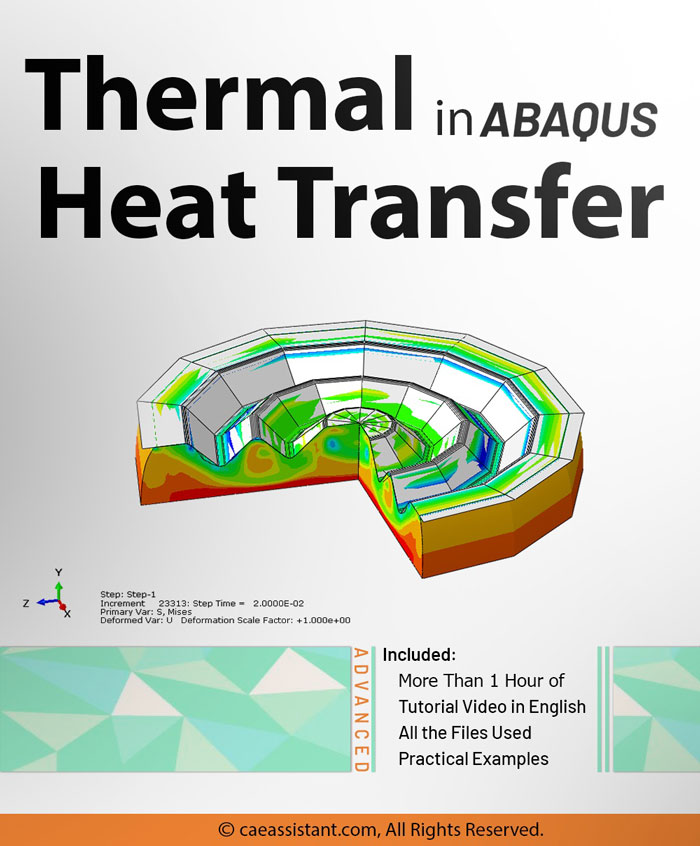
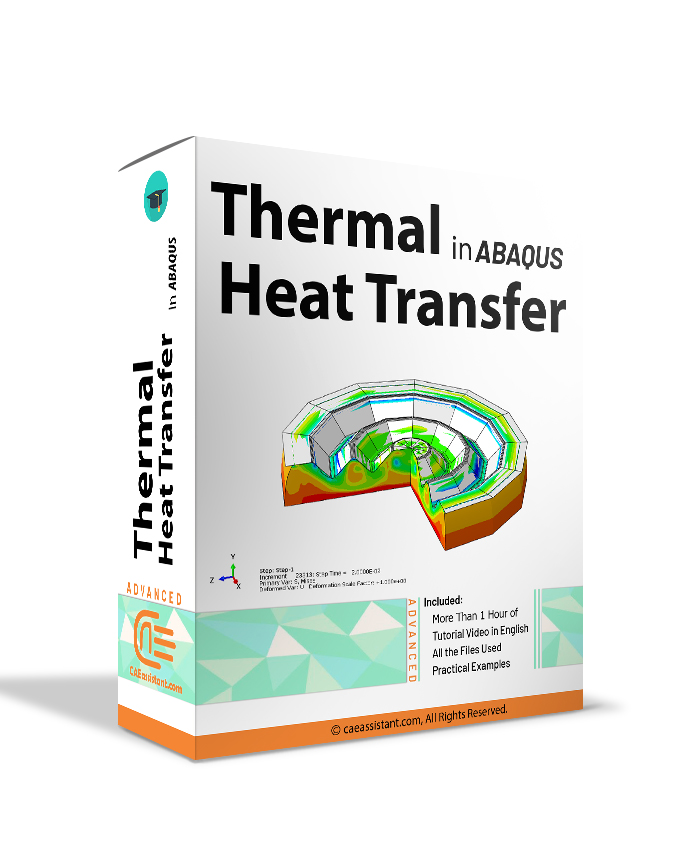
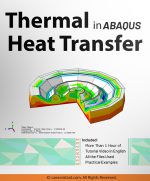
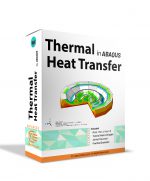
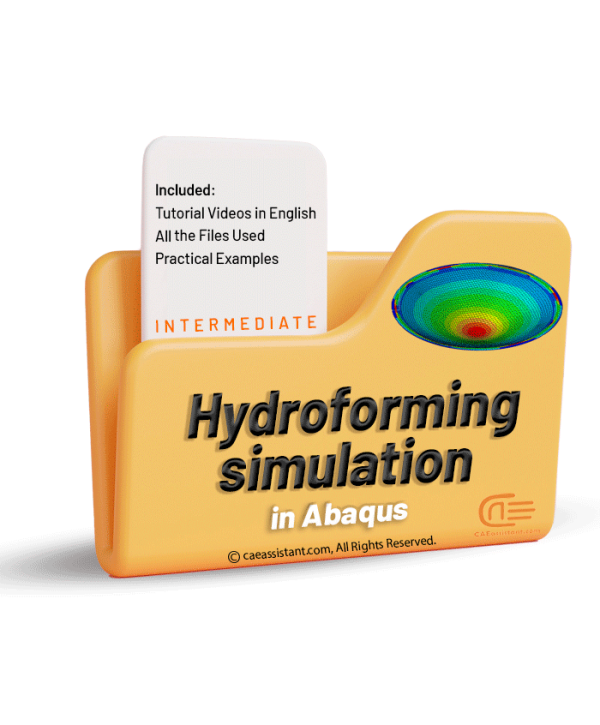
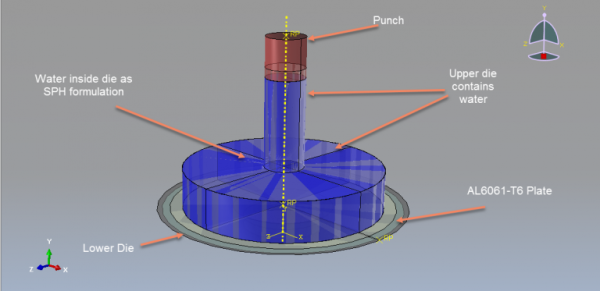
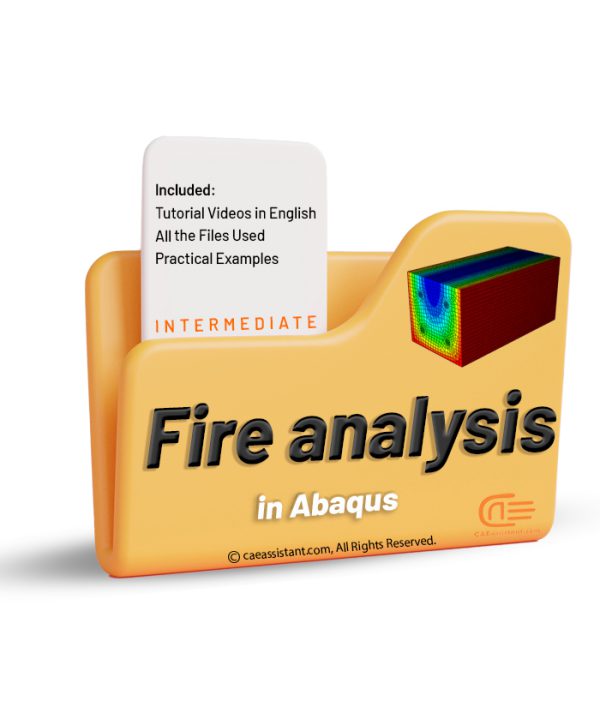
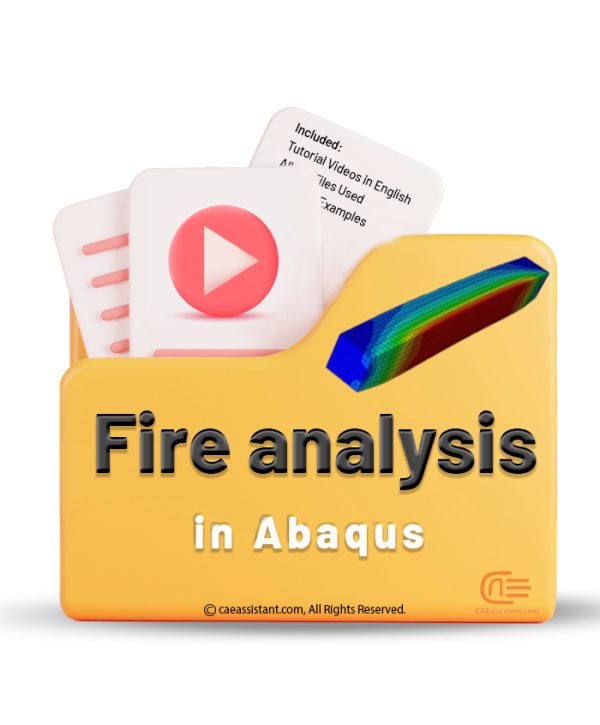
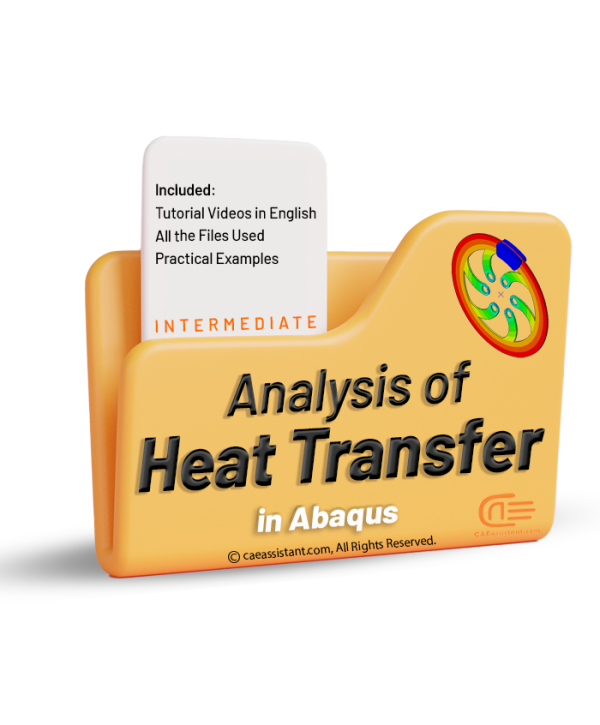
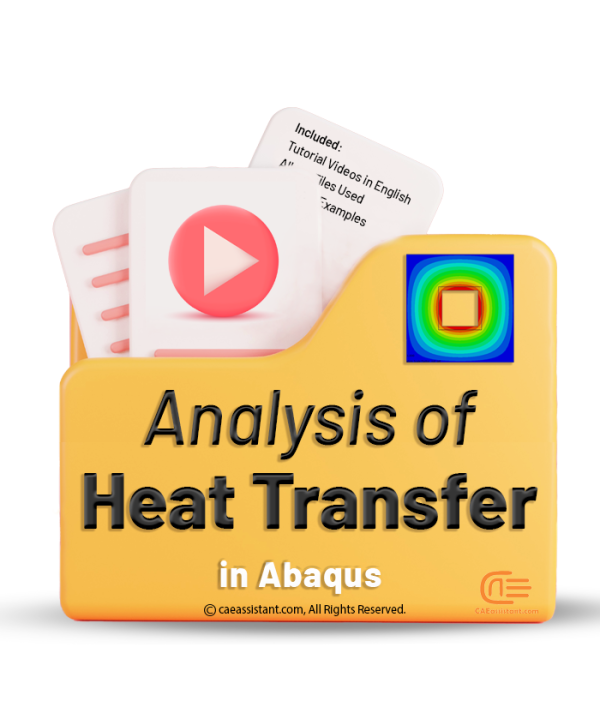
Oren –
The ‘Thermal Heat Transfer in Abaqus’ package was both comprehensive and practical, and it helped me quickly gain proficiency in thermal analysis. The detailed examples and information provided were particularly useful in solving complex issues.
Flavio Romano –
It is really good. In my project, I want to simulate the heat flux which has a complex function depending on element number, time, coordinate and other parameters. How can I do that?
Ansel –
My experience with this package was excellent, and I was able to achieve highly accurate results. The content allowed me to explore advanced techniques in thermal analysis and apply them effectively. Now that I’ve reached a new level of precision, is there an option for technical support or consulting for specific projects?
Dorian –
The ‘Thermal Heat Transfer in Abaqus’ package greatly improved the quality of my work. The training materials were thorough and professional, and I was able to achieve precise simulations with the help of the provided techniques.
Leif –
Using this package had a remarkable impact on my ability to perform thermal analyses. The techniques provided were practical and well-explained, which helped me tackle more complex simulations
Thorne –
The ‘Thermal Heat Transfer in Abaqus’ package not only assisted me in conducting thermal simulations but also enhanced my ability to optimize and analyze results with greater accuracy. The comprehensive and up-to-date content was extremely beneficial. Now that I have achieved better results, are there additional resources for studying advanced thermal analysis and optimization techniques?